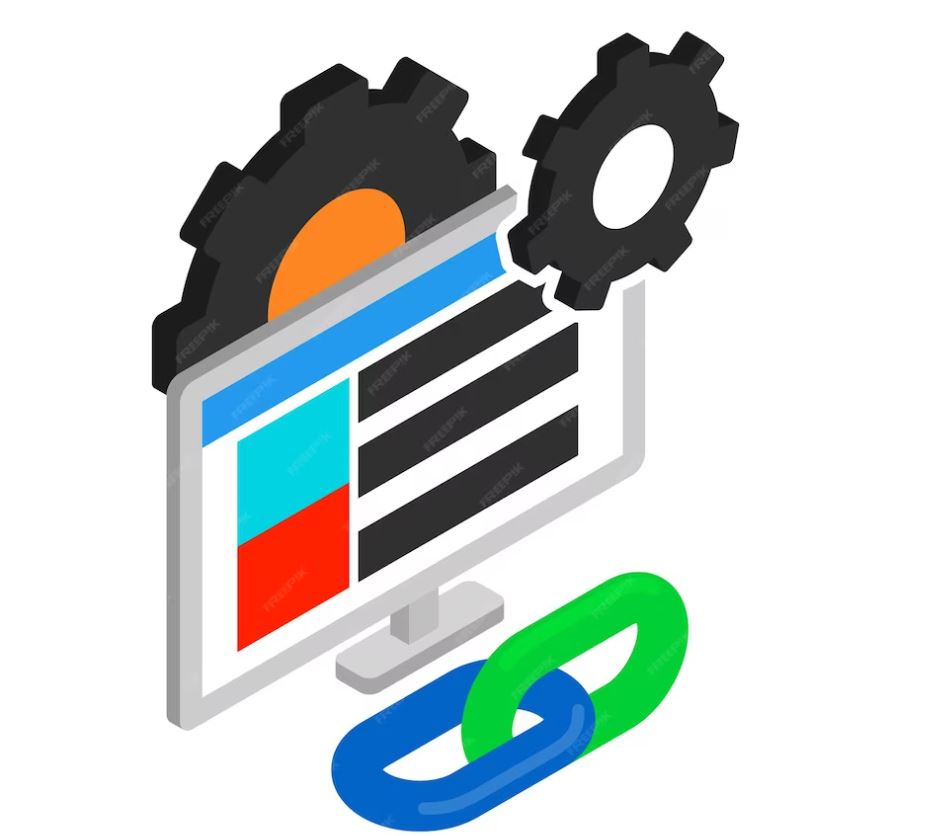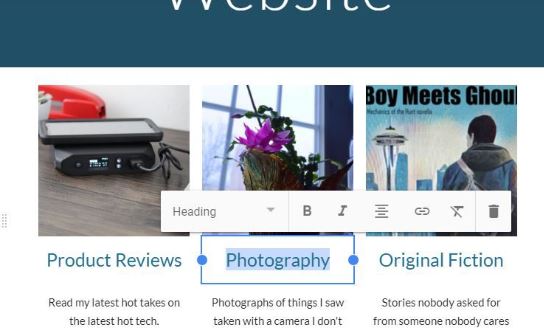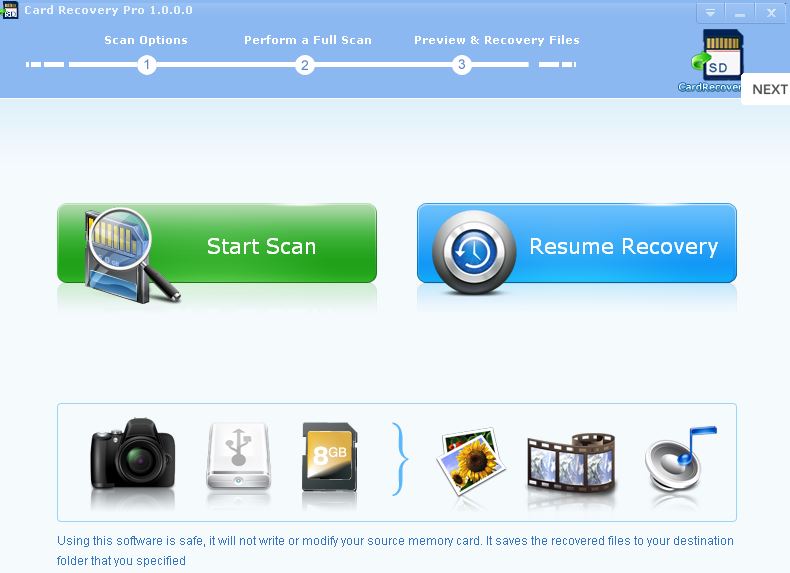
Creating a website has become an increasingly popular way to generate passive income. One of the most effective monetization methods is Google AdSense.
This powerful advertising platform enables website owners to display contextual ads and earn money every time a visitor interacts with them.
So, if you're looking to create a website or maximize your existing website's potential, this comprehensive guide will take you through the step-by-step process of how to create a website to earn money on Google AdSense.
Conduct market research
Market research is an essential step in creating a niche website. It helps you understand your target audience, identify competition, and validate the demand for your niche. Here is a step-by-step guide on how to conduct market research for a niche website:
1. Define your niche
Identify the specific niche you want to focus on.
For example, if you want to create a website about vegan recipes, specify your niche further by focusing on vegan desserts or vegan breakfasts.
There are several niches that tend to earn more money in Google AdSense due to higher click-through rates (CTR) and cost-per-click (CPC). Here are some examples:
1. Finance and Investment:
This niche includes topics like personal finance, investments, stocks, and financial planning. Advertisers in this field typically pay higher CPC rates.
The finance and investment field can be broadly categorized into different categories and subcategories:
1. Personal Finance:
- Budgeting and Financial Planning
- Debt Management
- Retirement Planning
- Tax Planning
- Insurance Planning
- Estate Planning
- Wealth Management
2. Investment Management:
- Portfolio Management
- Asset Allocation
- Risk Management
- Investment Strategy
- Performance Monitoring
3. Financial Markets:
- Equities
- Fixed Income
- Commodities
- Foreign Exchange
- Derivatives
- Cryptocurrencies
4. Corporate Finance:
- Capital Budgeting
- Financial Risk Management
- Mergers and Acquisitions
- Corporate Valuation
- Treasury Management
- Financial Modeling
5. Banking and Financial Institutions:
- Commercial Banking
- Investment Banking
- Retail Banking
- Private Banking
- Wealth Management
6. Financial Planning and Analysis:
- Financial Forecasting
- Budgeting and Forecasting
- Financial Reporting and Analysis
- Variance Analysis
- Performance Measurement
7. Real Estate Investment:
- Residential Real Estate
- Commercial Real Estate
- Real Estate Investment Trusts (REITs)
- Property Valuation
- Property Management
8. Alternative Investments:
- Private Equity
- Venture Capital
- Hedge Funds
- Private Debt
- Real Assets (e.g., infrastructure, natural resources)
9. Behavioral Finance:
- Investor Psychology
- Decision-Making Biases
- Market Sentiment Analysis
- Emotional Investing
- Prospect Theory
10. Financial Economics:
- Capital Asset Pricing Model (CAPM)
- Efficient Market Hypothesis
- Financial Econometrics
- Financial Forecasting Models
2. Health and Wellness:
Content related to health, nutrition, fitness, and wellness often has high CPC rates. It is a highly competitive niche with a high demand for advertising.
1. Physical Health and Fitness:
- Exercise and Strength Training
- Cardiovascular Fitness
- Flexibility and Mobility
- Weight Management
- Sports and Athletics
- Rehabilitation and Physical Therapy
2. Mental and Emotional Wellness:
- Stress Management
- Anxiety and Depression
- Positive Thinking and Mindset
- Emotional Intelligence
- Relaxation and Meditation
- Therapy and Counseling
3. Nutritional Wellness:
- Healthy Eating and Balanced Diets
- Vitamins and Supplements
- Weight Loss and Weight Gain
- Nutritional Deficiencies
- Food and Nutrition Education
- Allergies and Intolerances
4. Preventive Medicine and Health Maintenance:
- Vaccinations and Immunizations
- Regular Check-ups and Screenings
- Disease Prevention and Control
- First Aid and Safety
- Health Education and Awareness
- Rest and Sleep Management
5. Spiritual Wellness:
- Meditation and Mindfulness
- Yoga and Tai Chi
- Prayer and Spiritual Practices
- Connection with Nature
- Finding Meaning and Purpose
- Gratitude and Compassion
6. Occupational Wellness:
- Work-Life Balance
- Career Development and Advancement
- Workplace Stress
- Time and Task Management
- Professional Relationships
- Skill Enhancement
7. Social Wellness:
- Healthy Relationships and Communication
- Community Engagement and Volunteering
- Cultural Diversity and Inclusion
- Building Supportive Networks
- Peer Pressure and Peer Relationships
- Conflict Resolution
8. Environmental Wellness:
- Sustainable Living and Conservation
- Pollution and Toxin Awareness
- Eco-Friendly Practices
- Outdoor Recreation and Exploration
- Nature Conservation and Preservation
- Waste Management and Recycling
9. Personal Development and Self-Care:
- Goal Setting and Achievement
- Time Management and Productivity
- Stress Reduction and Relaxation Techniques
- Personal Finance and Budgeting
- Hobbies and Creative Pursuits
- Self-reflection and Self-awareness
3. Technology and Gadgets:
Topics such as smartphones, laptops, software reviews, and latest gadgets tend to attract tech-savvy users who are more likely to engage with ads.
There are numerous categories and subcategories within the field of technology and gadgets. Here are some common categories and their respective subcategories:
1. Computers and Laptops
- Desktop computers
- Laptops
- Workstations
- Gaming computers
- All-in-one computers
2. Mobile Devices
- Smartphones
- Tablets
- Smartwatches
- Fitness trackers
- E-readers
3. Home Entertainment
- Televisions
- Projectors
- Home theater systems
- Media players
- Streaming devices
4. Audio and Music
- Headphones
- Speakers
- Earphones
- MP3 players
- Home audio systems
5. Cameras and Photography
- Digital cameras
- DSLR cameras
- Mirrorless cameras
- Action cameras
- Instant cameras
6. Gaming
- Gaming consoles
- Gaming accessories
- Gaming PCs
- Virtual reality (VR) devices
- Gamepads and controllers
7. Wearable Technology
- Smartwatches
- Fitness trackers
- Augmented reality (AR) glasses
- Virtual reality (VR) headsets
- Smart clothing
8. Smart Home
- Smart speakers
- Smart thermostats
- Smart lighting
- Smart locks
- Security cameras
9. Internet of Things (IoT)
- Connected home devices
- Smart appliances
- Smart security systems
- Wearable fitness devices
- Connected cars
10. Accessories and Peripherals
- Keyboards and mice
- Printers
- External hard drives
- USB flash drives
- Monitors
11. Health and Fitness
- Fitness trackers
- Smart scales
- Sleep trackers
- Blood pressure monitors
- ECG monitors
12. Office and Productivity
- Laptops
- Tablets
- Printers
- Scanners
- Projectors
13. E-readers and Tablets
- E-readers
- Tablets
- Styluses
- Tablet cases
- Tablet keyboards
14. Virtual Assistants and AI
- Smart speakers (e.g., Amazon Echo, Google Home)
- Virtual assistants (e.g., Siri, Alexa, Google Assistant)
- AI-powered chatbots
- Voice-controlled devices
15. Robotics and Drones
- Domestic robots (e.g., vacuum cleaners, lawn mowers)
- Educational robots
- Industrial robots
- Consumer drones
- Professional drones
4. Travel and Tourism:
Content about travel destinations, vacation planning, and hotel reviews can generate higher earnings, especially if the site targets popular tourist destinations.
Travel and Tourism can be categorized into various categories and subcategories. Here are some of them:
1. Destination-related categories:
- Beach Tourism
- Adventure Tourism
- Cultural Tourism
- Eco-tourism
- Medical Tourism
- Wildlife Tourism
- Heritage Tourism
- Religious Tourism
- Urban Tourism
- Rural Tourism
2. Accommodation-related categories:
- Hotels and Resorts
- Hostels and Guesthouses
- Bed and Breakfasts
- Vacation Rentals
- Campgrounds and Caravans
3. Transportation-related categories:
- Air Travel
- Rail Travel
- Road Trips and Car Rentals
- Cruise Travel
- Bus and Coach Travel
4. Activity-related categories:
- Adventure Sports
- Watersports
- Skiing and Snowboarding
- Hiking and Trekking
- Wildlife Safaris
- Theme Parks
- Wellness and Spa
5. Travel Planning and Services-related categories:
- Travel Agencies and Tour Operators
- Travel Insurance
- Visa Assistance
- Travel Guides and Books
- Online Booking Platforms
6. Food and Dining-related categories:
- Restaurants and Cafes
- Street Food
- Culinary Tours and Food Festivals
7. Events and Festivals-related categories:
- Music Festivals
- Cultural Festivals
- Sporting Events
- Carnivals and Parades
8. Educational and Volunteer Tourism-related categories:
- Study Abroad Programs
- Volunteer and Community Service Programs
9. Luxury Travel-related categories:
- Luxury Hotels and Resorts
- Private Villas and Yachts
- Exclusive Travel Experiences
10. Special Interest Tourism-related categories:
- Photography Tours
- Birdwatching and Nature Tours
- Culinary and Wine Tours
- Art and History Tours
5. Home Improvement and DIY:
This niche appeals to homeowners and those looking to improve their living spaces. Advertisers in this field often offer high CPC rates.
1. Carpentry and Woodworking
- Furniture making
- Cabinet making
- Deck building
- Wood carving
2. Plumbing
- Pipe installation
- Toilet repair
- Faucet installation
- Drain clog removal
3. Electrical
- Wiring
- Outlet installation
- Light fixture installation
- Ceiling fan installation
4. Painting and Decorating
- Interior painting
- Exterior painting
- Wallpaper installation
- Faux finishing
5. Flooring
- Carpet installation
- Hardwood flooring installation
- Tile installation
- Laminate flooring installation
6. Gardening and Landscaping
- Planting flowers and shrubs
- Lawn maintenance
- Patio construction
- Garden design
7. HVAC (Heating, Ventilation, and Air Conditioning)
- AC unit installation
- Furnace repair
- Duct cleaning
- Thermostat installation
8. Bathroom and Kitchen Renovation
- Tile installation
- Sink installation
- Cabinet installation
- Countertop replacement
9. Roofing and Exterior
- Roof repair
- Gutter installation
- Siding replacement
- Window installation
10. Organization and Storage
- Closet organization
- Shelving installation
- Garage organization
- Pantry organization
6. Beauty and Fashion:
Topics related to beauty tips, hairstyles, makeup tutorials, and fashion trends attract a large audience. Advertisers in the beauty and fashion industry often pay well for ad placements.
Beauty:
1. Skincare
- Cleansers
- Toners
- Moisturizers
- Serums
- Masks
- Exfoliators
- Eye creams
- Sunscreens
- Acne treatments
- Anti-aging products
2. Makeup
- Foundations
- Concealers
- Powders
- Blushes
- Bronzers
- Highlighters
- Eyeshadows
- Eyeliners
- Mascaras
- Lipsticks
- Lip glosses
- Lip liners
- Makeup brushes
3. Haircare
- Shampoos
- Conditioners
- Hair masks
- Hair oils
- Hair serums
- Hair styling products
- Hair tools (curling irons, straighteners, hair dryers)
- Hair accessories (hair clips, headbands, hair ties)
4. Fragrances
- Perfumes
- Colognes
- Body mists
- Deodorants
- Perfume oils
- Solid perfumes
5. Nail care
- Nail polishes
- Nail tools (nail files, cuticle pushers, nail clippers)
- Base coats
- Top coats
- Nail treatments
- Nail art accessories
6. Bath and Body
- Body washes
- Body lotions
- Body creams
- Body oils
- Body scrubs
- Bath bombs
- Bath salts
- Body butters
- Hand creams
- Foot creams
- Hand sanitizers
- Self-tanning products
Fashion:
1. Clothing
- Tops
- Bottoms
- Dresses
- Skirts
- Shorts
- Jeans
- Pants
- Jackets
- Coats
- Sweaters
- Cardigans
- Activewear
- Swimwear
- Lingerie
- Sleepwear
2. Footwear
- Shoes
- Boots
- Sandals
- Sneakers
- Heels
- Flats
- Slippers
- Wedges
- Espadrilles
3. Accessories
- Handbags
- Wallets
- Backpacks
- Tote bags
- Clutches
- Crossbody bags
- Belts
- Hats
- Scarves
- Gloves
- Sunglasses
- Jewelry (necklaces, earrings, bracelets, rings)
- Watches
- Hair accessories
- Umbrellas
- Keychains
4. Beauty-related clothing
- Skincare-infused clothing
- Compression clothing
- Shapewear
- Sleepwear with skincare benefits
5. Activewear
- Sports bras
- Leggings
- Shorts
- Tank tops
- T-shirts
- Jackets
- Hoodies
- Athletic shoes
- Athletic accessories
6. Formalwear
- Evening gowns
- Cocktail dresses
- Suits
- Tuxedos
- Dress shirts
- Dress pants
- Formal shoes
7. Personal Finance and Debt Management:
This niche covers topics like debt consolidation, credit repair, and financial planning for individuals struggling with debt. Advertisers in this field often have higher budgets for customer acquisition.
Personal Finance categories and subcategories:
1. Budgeting
- Expense tracking
- Income analysis
- Goal setting
2. Saving and Investing
- Emergency fund
- Retirement planning
- Investment strategies
- Asset allocation
3. Debt Management
- Debt consolidation
- Student loans
- Credit card debt
- Debt repayment strategies
- Negotiating with creditors
4. Tax Planning
- Tax deductions and credits
- Tax-efficient investing
- Retirement account contributions
- Filing taxes accurately and on time
5. Insurance
- Health insurance
- Auto insurance
- Homeowners/renters insurance
- Life insurance
- Disability insurance
6. Financial Goal Setting and Planning
- Short-term goals
- Mid-term goals
- Long-term goals
- Financial goal tracking
Debt Management subcategories:
1. Debt Consolidation
- Debt consolidation loans
- Balance transfers
- Home equity loans
2. Student Loans
- Repayment options
- Loan consolidation
- Student loan forgiveness programs
3. Credit Card Debt
- Interest rates
- Minimum payments
- Payoff strategies (e.g., debt avalanche, debt snowball)
4. Debt Repayment Strategies
- Snowball method
- Avalanche method
- Paying off highest interest rate debt first
5. Negotiating with Creditors
- Debt settlement
- Payment plan negotiation
- Working with credit counseling agencies
6. Bankruptcy
- Chapter 7 bankruptcy
- Chapter 13 bankruptcy
- Legal implications and consequences
2. Identify your target audience
Determine who your target audience is within your chosen niche. Consider factors like age, gender, location, interests, and preferences. This will help you tailor your website content to meet their needs.
Identifying your target audience is crucial for effective marketing and communication efforts. Here are some steps to help you identify your target audience:
1. Research your product/service: Understand the features and benefits of your product/service and how it solves a specific problem or caters to specific needs.
2. Analyze market segmentation: Break down your market into different segments based on demographics, psychographics, and behavioral characteristics. This includes factors such as age, gender, income level, interests, lifestyle, values, and purchasing habits.
3. Customer surveys and feedback: Conduct surveys, polls, or interviews with current customers to gain insights into their demographics, preferences, and buying behaviors. Ask questions about their age, location, interests, and why they chose your product/service.
4. Analyze competitors: Observe your competitors' customer base and identify the type of audience they tend to attract. Consider what sets your product/service apart and what unique audience you can target.
5. Use analytics and data: Utilize data from your website, social media platforms, and email marketing to analyze visitor behavior and demographics. Platforms like Google Analytics can provide valuable insights into the demographics and interests of your website visitors.
6. Create personas: Develop detailed profiles of your ideal customers, including their demographics, interests, goals, challenges, and motivations. This will help you have a clearer understanding of your target audience.
7. Test and refine: Implement targeted marketing campaigns and tactics to reach different audience segments. Analyze the results, monitor engagement, and adjust your strategies based on the feedback you receive.
3. Tools available to analyze the target audience of a keyword niche
There are several tools available to analyze the target audience of a keyword niche. Here are a few popular ones:
1. SEMrush: SEMrush is a comprehensive SEO tool that offers audience analysis features. It provides information about the interests, gender, age, and location of your target audience. Additionally, it can help identify the top websites and social media platforms your audience frequents.
2. Google Trends: Google Trends allows you to explore search trends and patterns over time. By analyzing search volume and related queries, you can gain insights into the interests and preferences of your target audience.
3. Facebook Audience Insights: If you are targeting a specific demographic on Facebook, the Audience Insights tool can provide valuable information about your target audience's interests, behaviors, and demographics. This data can help you refine your keyword niche and create targeted content.
4. Ahrefs: Ahrefs is an SEO tool that offers various audience analysis features. It provides information about the websites your target audience frequently visits and the keywords they search for. This can help you understand their preferences and identify potential competition.
4. Analyze competition
Research and analyze existing websites in your niche. Identify their strengths, weaknesses, and the content they offer. This analysis will help you understand what works well within your niche and where you can differentiate yourself.
- Search Engines: Use popular search engines like Google, Bing, or Yahoo to search for your keywords niche. Look for websites that appear on the first few pages of the search results.
- Website directories and industry listings: Explore industry-related directories or listings to find similar websites or competitors. These directories often categorize websites by industry or niche, making it easier to find competition.
Some examples of online directories include:- Google Business Profile: A prominent platform for businesses to create a profile and appear in Google search results.
- Superpages: An online directory offering business listings and local search services.
- Better Business Bureau: A well-known directory providing business ratings and accreditation.
- Hotfrog: An online directory for small businesses and local services.
- Merchant Circle: A platform for local businesses to network and promote their services.
- EZLocal: An online directory offering local business listings and marketing solutions.
- eLocal: A directory providing local business listings and advertising services.
- Manta: An online directory featuring business information and company profiles.
- Online forums and discussion boards: Participate in industry-specific forums, communities, or discussion boards. Often, other website owners or industry experts share valuable information and insights about the competition.
To find forums related to your niche you can search on Google:inurl:/forum "your niche" - Subscribe to newsletters and industry publications: Sign up for newsletters, subscribe to blogs, or follow industry-specific publications. These sources often cover news, trends, and analysis of your industry and can highlight potential competitors.
- Monitor search rankings and mentions: Continuously monitor your website's search rankings and track any mentions or references to your brand or similar websites. This helps you stay updated on the competition's activities and strategies.
- Website traffic analysis: Tools like SimilarWeb or Lookkle can provide information on your competitor's website traffic. You can see their estimated monthly visitors, traffic sources, popular pages, and even demographics. This helps you understand their reach and target audience.
- Backlink Analysis: Tools like Ahrefs, Moz, or Lookkle allow you to check your competitor's backlinks. Analyzing their backlink profile helps you understand their link-building strategies, identify high-quality websites for potential link opportunities, and discover link gaps that you can leverage.
- Social media analysis: Analyzing your competitor's social media presence using tools like Hootsuite or SocialPilot helps you understand their followers, engagement rate, content strategy, and social media advertising campaigns. It gives you an idea of how they engage with their audience and what resonates with them.
- Usability testing: Tools like Hotjar or Inspectlet allow you to conduct usability tests on your competitor's website. You can see how users interact with their site, identify any usability issues, and get ideas for improving your own site's user experience.
- Content analysis: Manually reviewing your competitor's website content, blog articles, and other resources helps you understand their content strategy, target audience, and content gaps. You can gain insights into their messaging, writing style, and how they engage their users.
- Social listening: Tools like Mention or Brand24 enable you to monitor your competitor's mentions across various online platforms. This helps you identify what people are saying about them, their reputation, customer feedback, and any potential opportunities or pain points you can address better.
5. Keyword research
Use keyword research tools like Google Keyword Planner or lookkle keyword research to identify popular keywords and search terms within your niche. This will help you create content that specifically targets the interests and needs of your audience.
- Analyze keyword metrics: Evaluate the metrics associated with the suggested keywords, such as search volume and competition. Aim for keywords with a balance between high search volume and manageable competition.
- Long-tail keywords: Focus on long-tail keywords, which are more specific and targeted phrases that usually have lower competition. These keywords often indicate a higher intent to take action, making it easier to attract relevant traffic.
- Optimize your content: Once you've selected the keywords you want to target, incorporate them naturally into your content. Utilize them in your page titles, headings, meta descriptions, and throughout the body of your content. However, avoid keyword stuffing, as it can negatively impact readability and search engine rankings.
- Create high-quality content: Keyword research is essential, but it should not compromise the quality of your content. Create informative, engaging, and valuable content that delivers what your audience is looking for. Prioritize user experience and aim to solve their problems or answer their questions.
- Monitor and adjust: Keep track of how your content performs using analytics tools like Google Analytics or the Google Search console. Analyze which keywords bring the most traffic, engagement, and conversions. If necessary, make adjustments to your content strategy based on the insights you gather.
6. Survey your target audience
Conduct surveys to gather valuable insights directly from your target audience. Ask questions related to their interests, preferences, challenges, and what they look for in a niche website.
Platforms like Google Forms, SurveyMonkey, or Typeform can help you create and distribute surveys easily.
7. Study online forums and communities
Join relevant forums and communities where your target audience is active. Understand their discussions, questions, and pain points. This will provide you with valuable insights into what they desire from a niche website.
8. Monitor social media platforms
Observe popular social media platforms like Facebook, Twitter, Instagram, and LinkedIn. Analyze conversations, groups, and posts related to your niche. This can help you identify trends and gauge the popularity of certain topics.
To monitor social media platforms with online tools, follow these steps:
- Choose the right online monitoring tool: There are various online tools available for social media monitoring such as Hootsuite, Sprout Social, Brandwatch, Mention, and Google Alerts. Research and choose a tool that suits your needs and budget.
- Set up your social media accounts: Create or link your social media accounts (Facebook, Twitter, Instagram, LinkedIn, etc.) to the monitoring tool. This will allow the tool to access your accounts and collect data.
- Set up monitoring keywords: Use the tool's settings to set up keyword monitoring for relevant platforms.
- Customize your monitoring settings: Adjust the tool's settings to include the social media platforms you want to monitor, specify the geographical location, and define the date range for monitoring. Consider setting up alerts or notifications for real-time updates.
- Analyze and interpret the data: As the tool collects data from social media platforms, it will provide you with insights, analytics, and reports. Review and analyze this data to gain valuable information about your brand, competitors, customer sentiment, and industry trends.
- Engage and respond: Actively engage with your audience on social media by responding to customer queries, comments, and mentions. Use the monitoring tool's inbuilt features to directly respond or schedule posts to maintain an active online presence.
- Follow up and iterate: Regularly review the gathered data, assess the impact of your social media activities, and make necessary adjustments to your strategies. Monitor trends, customer feedback, and competitor activities over time to stay up-to-date with the ever-changing social media landscape.
9. Analyze industry trends
Stay updated with industry news and trends related to your niche. This will help you anticipate future demand and adjust your website content accordingly.
- Google Trends: This tool allows you to see the popularity of a keyword over time and analyze the related search terms and topics. It provides insights into regional interest, related queries, and seasonality patterns.
- Google Keyword Planner: Provided by Google Ads, this tool helps analyze keyword volume, competition, and trends over time. It also shows related keywords and their search volumes, giving insights into industry trends and customer behavior.
- SEMrush: This comprehensive SEO tool offers Keyword Overview, where you can analyze keyword trends, search volume, organic and paid search competition, as well as related keywords and their positions in search results.
- BuzzSumo: This tool allows you to analyze content performance and trends by keyword or topic. It showcases the most shared and engaged-with content on social media platforms, helping you identify industry trends and popular topics.
- LinkedIn: Using the search function on LinkedIn, you can find industry-specific groups and communities related to your keyword. Joining these groups can provide valuable insights into the discussions, trends, and challenges within your industry.
- Social Mention: This social media search tool allows you to monitor mentions of your keyword across various platforms. It provides an overview of your keyword's sentiment, popularity, and engagement levels, helping you analyze industry trends.
- Industry Reports and Publications: Research industry-specific reports and publications to stay up to date with the latest trends and insights. These reports often include information about keywords and their relevance within the industry.
10. Analyze data and make informed decisions
Compile and analyze all the data collected during your research. Look for patterns, common preferences, and interests among your target audience. Use this information to make informed decisions about website content, design, and marketing strategies.
To analyze the target audience and make informed decisions about website content, design, and marketing strategies, you can create an Excel sheet with the following factors:
1. Demographic Information:
- Column 1: Name
- Column 2: Age
- Column 3: Gender
- Column 4: Location
- Column 5: Occupation
2. Preferences:
- Column 6: Interests (e.g., sports, music, cooking, technology)
- Column 7: Hobbies (e.g., reading, gaming, traveling)
- Column 8: Preferred communication channels (e.g., email, social media, phone)
3. Patterns and Behavior:
- Column 9: Purchase frequency (e.g., monthly, quarterly, annually)
- Column 10: Preferred product categories (e.g., clothing, electronics, beauty)
- Column 11: Average spending per purchase
4. Website Feedback:
- Column 12: Website usability rating (e.g., 1-5)
- Column 13: Feedback on content (e.g., engaging, informative, lacking)
5. Marketing Effectiveness:
- Column 14: Source of first contact (e.g., social media, referral, search engine)
- Column 15: Conversion rate (e.g., percentage of website visitors turned customers)
- Column 16: Marketing campaign effectiveness (e.g., ROI, click-through rate)
Choose a domain name and hosting
Selecting a memorable domain name that reflects your website's purpose is essential. Choose a domain registrar and a reliable hosting provider that can handle your website's anticipated traffic. A fast-loading website improves user experience and boosts search engine rankings, both critical factors for earning money with Google AdSense.
Buying a domain related to your main keyword can indeed be beneficial for SEO. It helps search engines understand the relevance of your website to the keyword, potentially improving your rankings.
Additionally, hosting your website in the country where you want to target the main traffic can result in faster loading times for users in that region.
However, it is important to note that domain name alone has a relatively small impact on SEO compared to other factors like high-quality content, backlinks, site structure, and user experience.
So while having a keyword-rich domain and hosting in the target country can provide some advantages, they should not be the only focus of your SEO efforts.
Here are a few points to consider:
- Choose a relevant domain: Select a domain name that is closely related to your main keyword or reflects the nature of your business. This can help give users and search engines an idea of what your website is about.
- Consider usability: While it's important for your domain to be relevant, it should also be easy to remember, pronounce, and type. Avoid using hyphens or numbers as they might confuse users. A user-friendly domain can positively impact user experience and brand recall.
Optimize website structure
Creating a well-structured website enhances user experience and search engine visibility. Categorize your website content into easily navigable sections and ensure intuitive website navigation. Implement a responsive design to make your website mobile-friendly and cater to the increasing number of mobile users.
Optimizing website structure is crucial for SEO as it helps search engines understand the content and relevance of each page on your website. Here are some steps to optimize your website structure:
- Use a logical hierarchy: Organize your website content in a hierarchical structure, starting with the homepage as the top-level page. Categorize your content into relevant topics and subtopics, ensuring a clear and logical flow of information.
- Implement breadcrumb navigation: Breadcrumb navigation provides a trail for users to easily navigate back to higher-level pages. It also helps search engines understand the hierarchy of your website. This can be particularly useful for eCommerce websites with deep product categories.
- Optimize internal linking: Internal links connect different pages of your website, allowing search engines to discover and navigate through your content. Include relevant anchor texts with appropriate keywords to help search engines understand the context and relevance of the linked pages.
- Use header tags: Utilize header tags (H1, H2, H3) to structure your content. This improves readability for users and helps search engines understand the importance and hierarchy of the information on each page.
- Keep URLs short and simple: Avoid long and complicated URLs that can confuse users and search engines. Short URLs are easier to remember and share, making them more user-friendly.
- Optimize for mobile: With the majority of searches now happening on mobile devices, it is essential to have a responsive and mobile-friendly website structure. Ensure that your website is optimized for mobile devices to improve user experience and SEO ranking.
- Generate an XML sitemap: An XML sitemap is a file that lists all the URLs on your website, making it easier for search engines to crawl and index your content. Submitting your sitemap to search engines like Google can help them discover and understand the structure of your website.
Craft high-quality and engaging content
Content is king! Create high-quality, original, and engaging content tailored to your target audience. Focus on providing informative and value-added content that positions your website as an authoritative source in its niche. Incorporate relevant keywords throughout your content naturally, without overstuffing, to improve organic search rankings.
Ad placement and optimization
Strategic ad placement plays a crucial role in increasing ad clicks and revenue. AdSense offers a variety of ad types, including display ads, text ads, and matched content. Experiment with different ad placements, such as above the fold, within content, or in the sidebar, ensuring they do not disrupt user experience.
Utilize search engine optimization (SEO) techniques
Implement SEO best practices to enhance your website's visibility on search engines. Optimize your meta tags, headings, and URLs with relevant keywords. Use image alt text and compress your images to improve loading times.
Generate backlinks through outreach, guest posting, and social media, as these links improve organic rankings.
Leverage social media and email marketing
Promoting your website through social media platforms can significantly increase traffic and potential earnings. Develop a strong social media presence, engage with your audience, and share your valuable content.
Additionally, build an email list and create compelling newsletters to keep your subscribers informed and eager to visit your website.
Monitor and track performance
Regularly analyze your website's traffic, ad performance, and user behavior using tools like Google Analytics and AdSense reporting. These insights will help you understand your audience, identify trends, and optimize your website for maximum earnings.
Conclusion
Creating a website to earn money with Google AdSense is an excellent way to generate passive income streams. By following the steps outlined above, conducting thorough market research, crafting high-quality content, optimizing your website for SEO, and leveraging social media and email marketing, you'll be well on your way to creating a successful website that maximizes your earnings with Google AdSense. Remember, patience, continuous improvement, and staying up-to-date with industry trends are key to long-term success in this competitive online ecosystem.
Tips on SEO and Online Business
Next Articles
Previous Articles














